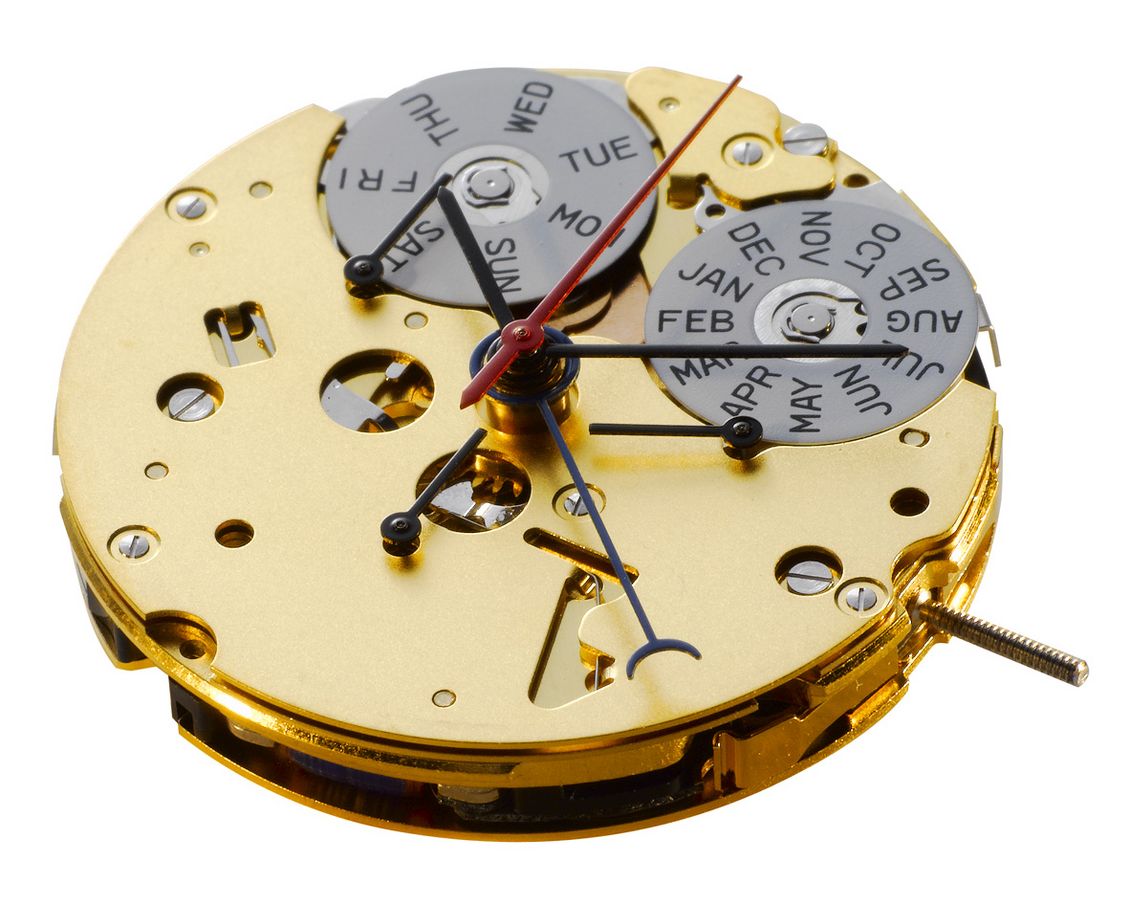Solartech movements are available in six version.
Product Finder
One click takes you to the desired functions.
What is a quartz movement and how does it work?
A quartz movement is also known as an electronic movement. A battery supplies the energy to drive the gears. These move hands or discs connected to them and thus show the time, date, day or other functions on a watch.
The watch movement consists of a battery, electronic circuits, and a quartz crystal. The battery sends electric current through the quartz crystal, causing it to oscillate at a frequency of 32,768 kHz. The oscillations measured by the circuits are converted into an exact time signal, which in turn regulates the movement of the watch hands.
What are the advantages of quartz movements?
Quartz watches are very popular because they are very accurate, require little maintenance and give their owners pleasure for many years.
It is therefore not surprising that not only fashion labels but also well-known brands in the mid-price segment equip their models with our quartz movements.
How to measure the size of movements?
The size of a movement for wristwatches is typically indicated by the number of so-called "lignes" which measure the diameter of the movement. It is a French unit of measurement dating back to the 18th century and one "ligne" equals to 2.2558 millimeters.
Although we still use this unit of measurement in the watch industry today, the diameter is often given in millimeters in parallel for easier understanding.
Size of Ronda quartz movements
Our extensive range includes well over 100 basic calibers and offers from the mini movements in sizes 3¾ x 6''' or 4¼''' up to the XXL movement with 15''' in various dimensions with different movement heights.
This is how we distinguish movement functions
Ronda quartz movements are categorized according to their functionality as classic functions, multifunctions and chronographs.
Which are "classic functions" of a watch movement?
In our range, these include all 2- and 3-hand movements with a normal date, the small second and the big date without direct change. Classic functions of the 5xx, 7xx, 1xxx and 6xxx.D series can be found in the lines
When can a watch movement claim to be "multifunction"?
The term multifunction movement is not uniformly defined in the watch industry. At Ronda, we classify movements as multifunctions if they offer more than the classic functions, e.g. additional indication of the moon phases.
Multifunctions of the series 5xx, 7xx, 4xxx, 6xxx.B, 7xxx and the series X can be found in the line
What is a "chronograph"?
As soon as a movement offers the function of stopping time we speak of a chronograph or chrono. In a broader sense, this could be understood as a multifunction, but due to the complexity of a chronograph as well as our extensive range, we have given these models their own line. Here you can find the chronos of the series 3500, 5000, 8000 and series Z.
![[Translate to English:] Solar Classic Functions & Chronos from Ronda](/fileadmin/_processed_/5/a/csm_20250328_Ronda_Website_NEW_2000x2000px_solartech_kombi_RZ_97eef82801.jpg)

